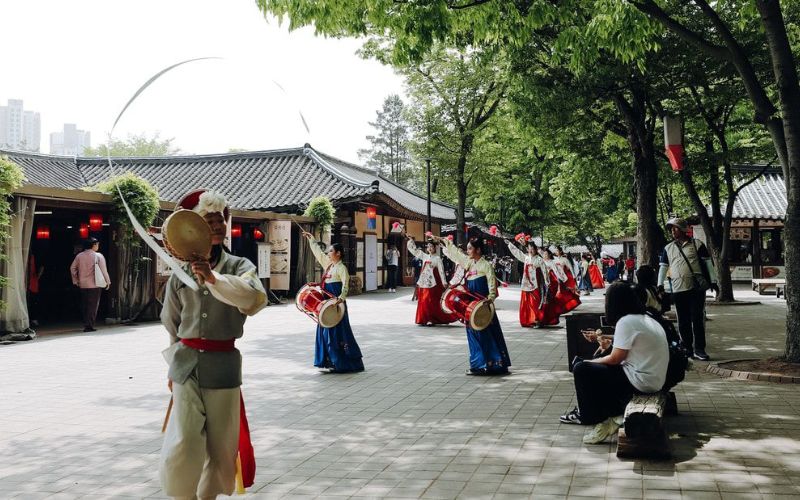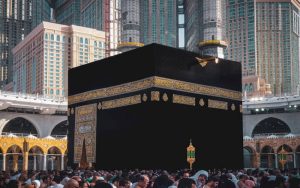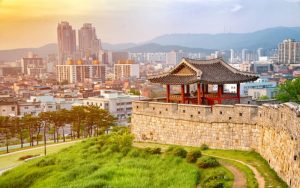Exploring Korean Folk Villages: Step Back in Time

Thinking of your next culturally enriching vacation? South Korea is the place you should look at because it is a country that perfectly combines the modernity and tradition. Although its urban centers, the futuristic technology, and K-pop culture might be grabbing all the attention, there is also a more nostalgic side to the country through its folk villages. These reconstructed and preserved villages provide tourists with an exclusive view of the real Korean life of centuries past. A stay in these villages is an experience of going back in time where time is slow and tales of old Korea are alive.
Folk villages in South Korea are not only attractions: they represent living museums, full of architecture, crafts, performances, and rituals, which celebrate the rich cultural heritage of Korea. These villages are memorable whether you are walking along the houses with thatched roofs or attending traditional dances. Visiting a folk village is an imperative in the itinerary of those who book South Korea Holiday Packages or investigate South Korea Tour Packages in order to gain an insight into what the soul of the country is.
1. Korean Folk Village (Yongin)
The Korean Folk Village is a traditional village located just outside Seoul in Yongin that is one of the most popular traditional villages in Korea. Modeled after the actual way of living in Joseon Dynasty (13921910), this village features more than 260 traditional houses brought in and collected in different provinces. The houses are organized on the basis of the social stratification of the epoch-in a descending order of the houses of the farmers to the mansions of the aristocrats. Tourists in this place have an opportunity to watch colorful cultural shows such as traditional marriage ceremonies, tightrope walking acrobats, and horseback martial arts. There is always something new to discover as well because of seasonal festivals. When you are planning your visit to South Korea, using South Korea Tour Packages, you should not miss Yongin.
2. Hahoe Folk Village (Andong)
The other unmissable destination is the Hahoe Folk Village in Andong, which is recognized as a UNESCO World Heritage Site. The village has the same layout that existed during the Joseon period and still hosts the descendants of the Ryu clan, which makes it authentic. It is a beautiful scenic town with the Nakdong River and pine forests on its surrounds and well preserved Confucian architecture. The Hahoe masks and the mask dance dramas performed here are what makes Hahoe really special. Not only are these performances entertaining, they are also social commentary that have been handed down through generations. When it comes to travelers who have obtained South Korea Visa, this ancient site gives them more cultural insight to the place than the common tourist attractions.
3. Namsangol Hanok Village (Seoul)
Namsangol Hanok Village is an oasis in the middle of the Seoul city. The five hanok houses found in this village are beautifully restored Joseon period buildings which have been brought to the village to educate citizens about the Korean architecture and cultural heritage. This place is enclosed by beautiful gardens and traditional pavilions and holds workshops, calligraphy classes, and tea ceremonies. It is an ideal place to visit by people on shorter tours who nevertheless do not want to miss out the taste of traditional life without having to travel far away out of the city. It is also a wonderful place to take photos, due to the beautiful contrast between historical beauty and the skyline of Seoul. This spot is among many accessible but insightful stops in many South Korea Tour itineraries.
4. Jeju Folk Village (Jeju Island)
Jeju Island is not only renowned because of its volcanic scenery and beaches; it is also the location of the Jeju Folk Village Museum, which is a re-creation of the rural life of the island in the 1890s. It has more than 100 traditional houses and many artifacts that give an insight into the way the islanders fished, farmed, lived and worshipped in the past. The village is subdivided into different sectors which include mountain villages, fishing villages and Shamanism zones. There are live performances and storytelling sessions that bring life to the exhibits and this is a fantastic thing to include in your Jeju itinerary.
5. Naganeupseong Folk Village (Suncheon)
Naganeupseong is a well-maintained fortified village in Suncheon, Jeollanam-do. The village is considered to be the Joseon Dynasty village and is distinct due to the fact that the local families still live there and preserve the ancient lifestyle. This will enable the travellers to have a better and real cultural experience than they would have in museum-like villages. Naganeupseong has traditional houses, government buildings, guesthouses, and fortress wall. Tourists also have an opportunity to take part in traditional Korean games, local farming and cooking classes.
6. Bukchon Hanok Village (Seoul)
Another culturally rich place in Seoul is the Bukchon Hanok Village which is located between the Gyeongbokgung and the Changdeokgung Palaces. It is not really a folk village, but it is a residential district where hundreds of traditional houses in the form of hanok are still used. Numerous hanoks have been turned into guesthouses, cultural centres, and craft workshops. Bukchon is a postcard of old Korea, which you can walk through. The region has great panoramas, beautiful streets and alleys and much local art. The trip to this place is a compliment to any urban-based itinerary that is booked with South Korea Holiday Packages because it offers a personal and intimate touch with traditional life.
7. Oeam Folk Village (Asan)
To those who feel like going beyond the touristic-concentrated regions, Oeam Folk Village in Asan can present a serene and genuine cultural escape. It is another inhabited village where people continue to use ancient agricultural techniques, and their life style is based on the centuries-old tradition. The village design is based on geomantic principles (pungsu-jiri) and this gives the village a spiritual dimension to the aesthetic beauty you will experience here. Visitors will have the experience of handcrafting, eat homemade traditional food, and they can even spend the night in a hanok guesthouse. It is a value addition to the customers who book custom South Korea Tour Packages.
Conclusion
Folk villages of South Korea are not only a tourist destination but a gateway to South Korean soul. They are the best contrast to the high-tech image of Korea and display profound respect to heritage, culture, and history. It can be the classy hanoks of Bukchon or the ceremonial mask dances of Hahoe, but any village will have a story to tell that will add to the depth of your travelling.
To have a more cultural experience, a visit to these folk villages is an experience worth taking by the traveler. Whether it is convenient access in Seoul, or rural gems off the beaten path, your schedule can be as diverse as your desires. As you seek to obtain South Korea travel visa or tailor your adventure with South Korea Tour Packages, ensure that these classic experiences are included in your adventure. Adore the beauty of tradition, and take a step back in time with each footfall in Korea living history.




